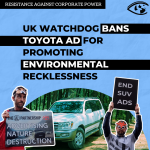The Education Industry Facts: An Overview
One of the school arenas that gets the most attention from corporate sponsors are athletic scoreboards. Soft Drink companies are among the leading supporters of school sports activities. In Layton, Utah the local Coca-Cola bottler donated $45,000 for several scoreboards which carry the Coke logo during the 1992-3 school year. In Colorado Springs, on the other hand, Pepsi is the exclusive sponsor of a lighted scoreboard. In New York City, where basketball is the sport, FILA and Footlocker, manufacturers of athletic wear, donated money to rehab school courts. No advertising appears on the scoreboard, only a tag reading "Donated by..."Athletic fields

The Principal

School districts around the country have contracted with for-profit firms to manage individual schools. Many are charter schools that have autonomous budgets and curricula. (However private companies manage only10% of charter schools.) Wall Street has christened these school management companies 'EMOs', in a comparison with HMOs in the healthcare industry. Critics are concerned that just as HMOs have made the financial bottom line the standard in healthcare, EMOs will be more accountable to investors than pupils.
Among the major EMOs are:
The Edison Project, which by fall '98 expects to operate 48 schools with annual revenues of $127 million
Advantage Schools, Inc. which operates 8 schools in 7 states
Education Alternatives Inc., after having its contracts with the Baltimore and Hartford school districts cancelled has changed its name to TesseracT and is regrouping.
Classroom

Nowhere are kids more vulnerable to commercial messages than in the classroom; sponsored educational materials are everywhere.
Kellogg's, McDonalds, Nabisco Mars candy and the Wisconsin Dairy council are just a few of the sponsors of nutrition curricula.
Dupont, Dow Chemical, Proctor and Gamble, The National Energy Foundation and the Polystyrene Council are among the corporations and industry groups that sponsor environmental curricula. McDonald's teaches about deforestation, without mentioning the "burger connection" to rain forest destruction.
Economics lessons come from the Insurance Educational Foundation, which blames risky drivers for high rates. Proctor and Gamble takes a non-critical view of advertising as "powering the economy." Mobil Corporation's Unit on press freedom, incorrectly suggests that the First Amendment guarantees free-market capitalism.
Channel One is beamed into 40 percent of secondary school homerooms in the U.S. The twelve-minute current events program includes two minutes of commercials from sponsors such as Snickers, Rold Gold pretzels, CareFree bubble gum, Pepsi and Reebok. (See Channel One: a Case Study)
Chrysler, Minute Maid, Pizza Hut, Toys 'R Us and McDonalds sponsor reading incentive programs, that not only encourage kids to read, they also influence family purchases.
Companies like Westinghouse, Scholastic Inc., Sears Optical, Delta Airlines, and Discover Credit Corp. sponsor contests designed to promote their corporate images, products or services.
In the Hall

Advertising panels or wallboards in hallways and lunchrooms are commonplace. In the 1980's Whittle Communications, which launched Channel One, pioneered wallboard advertising. By 1989, 5,400 High Schools and 9,000 elementary schools carried the wallboards. Whittle has since dropped the wall ads, but others are imitating it.
Other Services

Many schools have begun contracting out support services. School bus transportation, janitorial services and grounds maintenance are some of the most frequently subcontracted services. Union leaders and others have raised the concern that subcontracting of school services opens the door to privatizing public education.
The Library

More than 16 million students use free textbook covers provided by marketing firms. Fifty different advertiser -- including Nike, McDonald's and Hershey -- use the covers to promote sneakers, junk food and other products to kids.
School bus

School-bus advertising is found in some school districts hungry for funds. And many more might permit it if it weren't for state restrictions.
In Colorado Springs, for example, colorful cartoon ads for 7-Up are emblazoned on both sides of school district buses. They even have 7- Up cans painted on top of the buses to draw the attention of drivers on overpasses. Burger King will also have its logo on five High School buses in the Colorado town.
Fremont, California's Unified School District had plans to accept school bus ads thwarted by the Highway Patrol. And the Mississippi Department of Education considered but ultimately rejected school bus ads for safety concerns.
The New York Times reports that New York City is considering selling ad space on its school buses.
The Cafeteria

The American School Food Service Association estimates that 13% of U.S. public schools sell fast foods. Among the chains that provide school lunches are:
- Pizza Hut and Taco Bell (Pepsico)
- Arby's
- Subway
Recently, "cola wars" in the schools have made national headlines. Soft drink companies engage in bidding wars for exclusive rights to place their vending machines in schools to build brand loyalty. Whether it's Coke or Pepsi, the colorful vending machines are strategically placed in high traffic areas outside school cafeterias, or in main hallways. When Democratic Senator Patrick Leahy introduced a bill in 1994 to ban the vending machines from schools, he met not only with opposition from the soft drink giants, but also school administrators who have come dependent on the revenues they generate.
- 188 Consumerism & Commercialism


